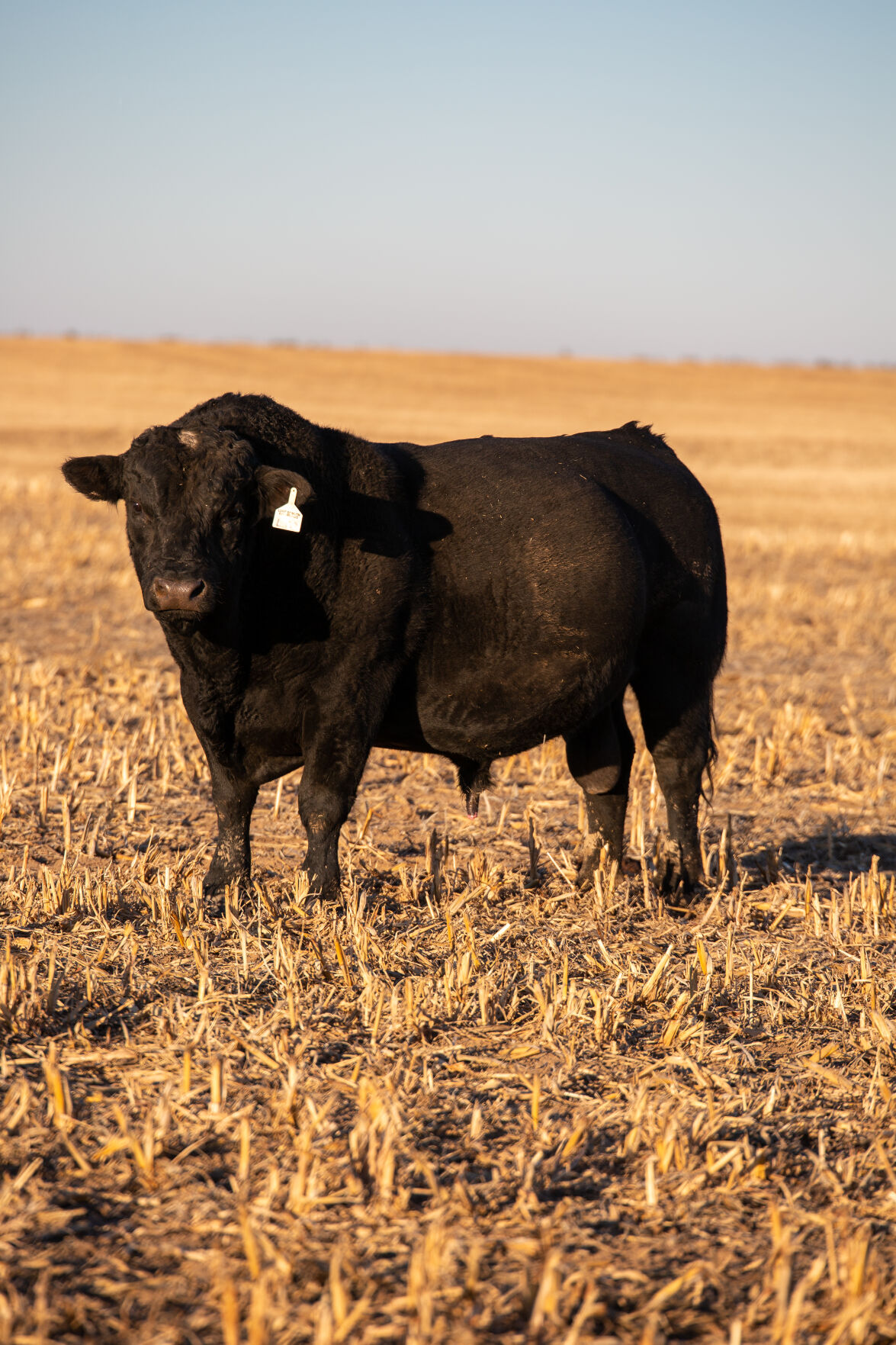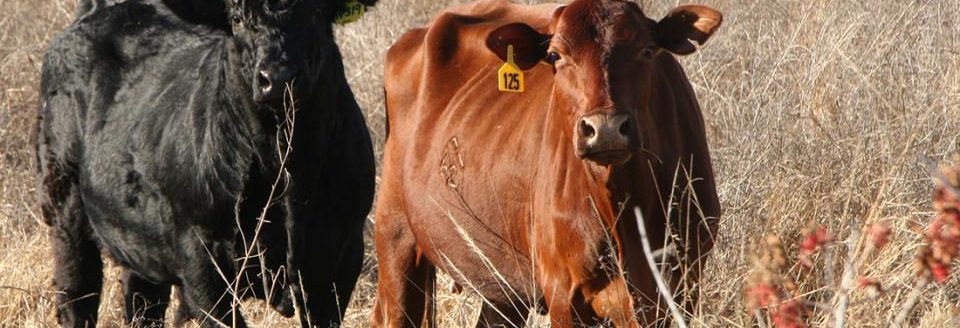Finding the best beef genetics that provide long-term values is on the mind of ranchers as they begin a new year.
Experts say building a good plan provides the recipe for success. Producers need to consider long-term success and variables that will need to be assessed in the current environment—most notably with drought and feed availability.
Rick Pfortmiller, a Neogen bovine genomics territory manager based in Natoma, Kansas, said it is going to take time to build back the nation’s cattle herd and it will increase the rancher’s costs as a result.
“History has indicated this will likely happen,” Pfortmiller said. “It did when we repopulated after the last drought.”
Several operators told him during ranch visits that in hindsight they wished they had known more about their expensive replacements because those heifers did not meet their expectations for long term genetic improvement.
Limited forage supplies do enter into the equation but understanding variables is important.
“Most people probably know this, but there is a difference between drought and climate,” said James Mitchell, an assistant professor and Extension livestock economist with the Department of Agricultural Economics and Agribusiness at the University of Arkansas. “Generally we select genetics so that cattle can thrive in their climate. Drought resilience is an added component of that. Those genetic decisions about climate and drought will differ for each producer depending on his location.”
Mitchell said it is difficult for genetics to overcome management decisions. “We can likely change how we manage our forage and water resource, which is more effective at managing drought than long-run changes to herd genetics.”
Genetic advancement is a long-term process, said Matt Spangler, a professor of animal science and Extension beef genetics specialist at the University of Nebraska-Lincoln. By the time drought occurs, it is too late to think about genetic selection decisions, such as bull selection decisions, to help mitigate the impact of reduced forage availability.
“Being prepared requires having a long-term plan and a well-defined breeding objective,” Spangler said.
Pfortmiller said when selecting a bull there is not a trait tied directly to drought tolerance. “However, selecting cattle that better suit the environment using indicator traits that can moderate cow size or away from cattle with extreme growth can help producers identify animals that are more adaptable.”
His company has genomic tests that can help sort for feed efficiency with most of the work on the trait occurring in the feedlot setting.
Spangler said finding traits that reduce energy requirements of the cowherd and topping the list is mature cow weight. That trait is highly heritable (50% to 60%), meaning that change can be made relatively quickly. Unfortunately, selection for increased earlier growth (weaning weight, post weaning gain, carcass weight), has indirectly increased mature cow weight.
“This need not be the case,” Spangler said.
EPDs are important
There are mature cow weight expected progeny differences available in some breeds that can be used to put downward selection pressure on this trait, and commercial producers should use these, Spangler said. Additionally, producers should consider a change in their breeding system. It is common for commercial cow-calf producers to produce replacement females from the same matings that produce terminal calves that are sold at weaning or retained through the feedlot.
“This makes increasing sale weight and decreasing mature cow weight even more challenging,” Spangler said.
Some commercial producers should consider purchasing replacements that are bred to be more moderate and have increased fertility and mate them to terminal bulls. Milk, or maternal weaning weight, is another trait that impacts feed requirements of cows. For producers in forage limited environments, Spangler recommends that the milk EPDs of bulls used are more moderate.
Sign up for HPJ Insights
Our weekly newsletter delivers the latest news straight to your inbox including breaking news, our exclusive columns and much more.
“Remember, heavy milking cows require more energy for maintenance meaning they can eat more even when they are dry because of increased visceral organ size,” Spangler said.
When selecting bulls from which replacement heifers will be kept, keep an eye on milk and mature size EPDs, said Tom Brink, CEO of Red Angus Association, Commerce City, Colorado.
“Too much of either can lead to daughters that require more feed and may struggle to breed back on time,” Brink said.
His association has a maintenance energy EPD, which can help commercial producers manage feed costs in a similar manner. As a rule, moderate-frame cattle can maintain flesh easier so culling tall and frail-built cows is generally a good idea.
Brink said once rain falls again over a wider swath of the United States replacement heifers will be in greater demand. That may be a year or two away yet. However, it is not too early to think about how herds that have been downsized will be rebuilt.
“Local auction markets, the internet, breed associations, livestock reps and a variety of livestock publications can all be good sources when seeking to purchase replacement females,” Brink said. “Be sure to look outside your local area and even in surrounding states to find what you’re looking for.”
Replacement heifers
Ranchers in many locales have sold heifers because they lack feed and other resources but that can mean new opportunities.
When the weather pattern shifts and the rebuilding process advances, there will be more heifers shifting from market terminals to the cowherd, Pfortmiller said.
“Using tools like genomics can help identify those heifers that are more suited for the ranch’s goals. In all likelihood, the cost of replacements will go up,” Pfortmiller said. “While genetically tested heifers may cost more there should be less inherent risk in bringing those in because the buyer can know more about them.”
Mitchell said the producer should first ask if whether he should be investing in replacements. That answer will be different for each producer.
“We should begin by evaluating resources for helping make decisions about investing in replacement cattle.”
Spangler said ranchers might consider a strategy that includes selecting replacement females that are able to do more with less. This means buying females with lower mature weight and increased sustained fertility. This can be accomplished by buying from producers that actually select for improved maternal characteristics, including decreased mature weight, he said. It is also important to understand breed differences relative to mature weight and maternal weaning weight. The U.S. Meat Animal Research Center, Clay Center, Nebraska, estimates and publishes breed of sire differences for growth and carcass traits on an annual basis. Recent estimates of breed differences for mature cow weight also exist.
“Using contemporary breed differences, instead of the way breeds compared decades ago, is important given breeds have changed over time,” Spangler said, as he also notes he continually says “female” and not “heifer.” Replacements do not need to be heifers if producers can find quality bred females coming with their second or later calf.
There are benefits to this including reduced calving difficulty, increased pregnancy rates, and increased weaning weights of calves, Spangler said. These females are often priced at a discount compared to bred heifers.
Higher replacement costs
In general cattle prices are headed higher during the next year and that is going to drive up a rancher’s cost when seeking replacements, Brink said.
“Replacement heifer costs will go up right along with other classes of animals,” Brink said. “This makes the timing of purchase decisions critical, and it will also be important to ‘get your money’s worth’ by purchasing the right kind of heifers with known genetics. It’s OK to pay more for high-genetic-merit females. However, the last thing anyone wants to do is to pay a higher price for inferior heifers.”
Be careful not to buy heifers that the rancher knows little about, he added.
Prices for replacements are correlated with cattle prices, Mitchell said. As cattle prices increase so do prices for replacement heifers.
“The simple answer is yes, producer costs will increase,” Mitchell said. “However, there is an important caveat that many people overlook. In aggregate, if cattle prices don’t keep pace with the cost of replacements, then producers won’t buy them and the U.S. cow herd won’t expand.”
The current tighter supplies will mean cattle prices will continue to increase and eventually it will be profitable to invest in replacement cattle, he said. “Replacement cattle will be more expensive but the fact the producers are purchasing and raising them means there are profit opportunities out there.”
Mitchell expects bull prices to correlate with the overall cattle markets.
“The old rule of thumb is that the price of a herd bull should be close to four to five times the price of a feeder calf,” Mitchell said. “This example implies that breeding stock prices are related to feeder cattle prices.”
Spangler noted that with fewer cows to breed, logic would dictate that the average bull price would go down assuming the same number of bulls are offered for sale, based on regions.
“My guess is that some sales will offer fewer bulls to protect themselves against this. Also remember that seedstock producers will be impacted by drought too, meaning there could be some degree of liquidation here,” Spangler said. “In general, I suspect that the top end bulls will sell well as they always do, and bulls toward the end of the lineup might have a hard time finding homes particularly in drought-stricken areas.”
Pfortmiller said market forces will dictate the supply and demand for bulls.
“If there are more cows, than likely more bulls will be offered up for sale,” he said. “Demanding that the bull seller has the latest technology like genomics to help sort through those animals will reduce their risks. After all, the bull is half the equation for several years of calf crops.”
Brink said the current environment might lend itself to strategy in which a rancher may consider aggressively culling low producing cows and keep more of his best heifers.
“Staying caught up on your bull needs is probably a good move as well,” Brinks said. “Odds are good bulls will cost more in 2024 and 2025 than in 2023.”
Pfortmiller said ranchers who are looking to work with a potentially growing replacement female market could use tools like heifer genomic tests that “will help you separate yourself from the commodity market and very likely will present an added value opportunity to sell breeding stock.”
The experts also took note of the need for precise records.
“Measure and record everything on your operation so that producers can establish benchmarks,” Mitchell said. “The outlook for cattle markets in 2023 is bullish.”
It’s easier to develop good habits when times are good, Mitchell said.
Spangler said one tip is to start by having a breeding objective and understand how the rancher’s cattle are performing now. This enables a producer to know what traits he needs to improve going forward.
“I would encourage producers to think about genetic decisions (bull or semen purchase) as investments,” Spangler said. “With that in mind, have some understanding of what the return on investment will be. This means being able to reconcile purchase price with the value of improved genetics that ultimately lead to improved phenotypes.”
Spangler said ranchers should visit www.eBEEF.org for additional information.
Pfortmiller said ranchers should ask as many questions as they need to be comfortable and make sure they are getting cattle that work for their operation.
Brink said investing in superior genetics and herd health should be a priority.
“Avoid skimping in these two areas. It’s also a good idea to evaluate how you can do a better job marketing your feeder calves,” Brink said. “There are many value-added programs available and more and more of these programs are delivering price premiums for ranchers who participate.”
Dave Bergmeier can be reached at 620-227-1822 or [email protected].




